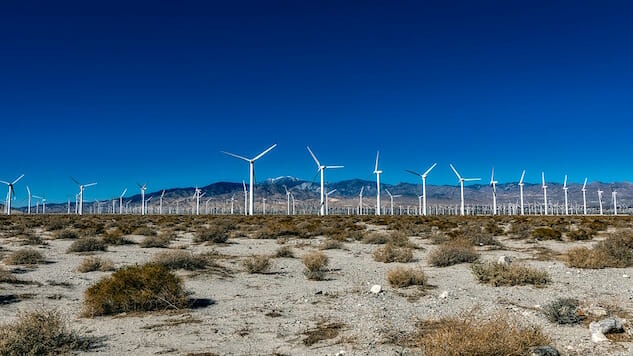Have Wind Farms Finally Come of Age?

In a word, no. When modern-day windmills, known as wind turbines, started popping up, they were attention grabbing. The huge, white propeller attached to a tall white pole was nothing like the iconic Dutch windmill with canvas “blades” attached to a house-like structure. As a sleek symbol of green energy, the wind turbine quickly became a popular example of diversifying energy sources to include renewable options. But many experts believe wind still has a long way to go.
The earliest stages of wind-power research and development brought down the cost of infrastructure and the energy it produced. Commercial and residential wind energy installations provided 4.1 percent of all electricity in the U.S. in 2013, according to the Energy Information Administration. While that doesn’t sound like much, the use of wind farms—installations of multiple wind turbines in a single location—are producing more energy at a lower cost. But there are problems.
Wind farms, just like the farms that grow crops, need specific conditions,like flat land, particular soil composition, wind flow and a host of other variables, says Katherine Dykes, senior engineer with National Renewable Energy Laboratory.
“You may often see rows of turbines since this can simplify and reduce costs associated with infrastructure in terms of access roads and electrical cables as well as construction and installation,” she says. “The turbines are spaced relatively close together to minimize these costs.”
But they also have to be spaced far enough apart to make sure that one turbine doesn’t interfere with the performance of another turbine. That makes finding ideal real estate a challenge.
Not In My Backyard/View Corridor
Anyone who lives near a wind farm can explain the unresolved problems. Noise and aesthetics are the biggest issues on the ground. And problems occur in the air—bird and bat deaths due to collision and electromagnetic interference disrupting airplane radar—says Sameer Hameer, assistant professor at Energy Center of Bahir Dar University, Ethiopia. He believes these issues require attention in order to make wind farms better in the future.
 Photo by Slawomir
Photo by Slawomir
“One has to do a proper techno-economic environmental evaluation. One has to do a proper resource assessment to assess the potential of wind … build capacity for the community in terms of green energy, creation of new jobs,” Hameer says. “The benefits are very clear in terms of reducing the carbon footprint, including lower cost.”
Equally important are the people affected by an installation. U.S. law imposes requirements on wind farms, including their proximity to residential areas. One possible solution is a location away from people, an ocean, sea or lake. In addition to taking advantage of the stronger, more consistent wind in the marine environment, strategic placement of wind turbines can means no people-related issues. The growing number of offshore wind farms will test this theory.
The Ecological Cost of Green Energy
-

-

-

-

-

-

-

-

-

-

-

-

-

-

-

-

-

-

-

-

-

-

-

-

-

-

-

-

-

-

-

-

-

-

-

-

-

-

-

-

 Photo by
Photo by 






































